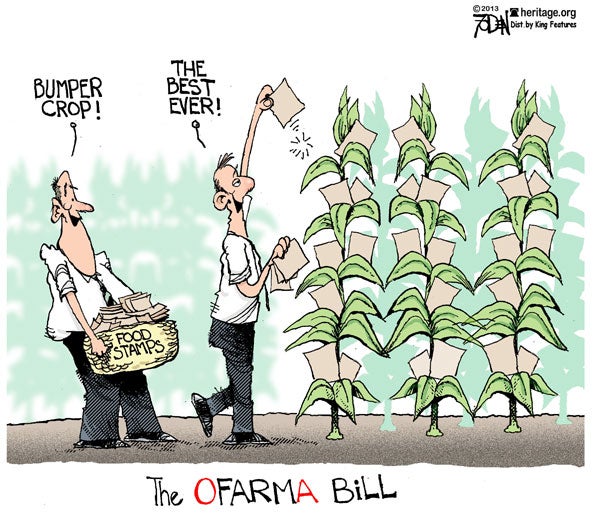As the debate over the farm bill continues, a great deal of hoopla has been made about cuts to the food stamps program. The Obama Administration has called the proposed cuts “harmful” and “unacceptable,” and has even threatened to veto the bill because of the cuts.
But what exactly are these “deep cuts”? About 2.5 percent. (That’s in the House version of the bill. The Senate’s version cuts much less.) That’s a 2.5 percent cut to a program that has increased in costs by roughly 100 percent since 2008. Far from deep cuts, the farm bill simply maintains historically high levels of food stamp spending.
In 2008, food stamp funding was roughly $40 billion. In 2012, spending was double that, at around $80 billion. Costs had been increasing prior to that, however. In 2000, food stamp spending was about $20 billion, roughly half of what it was in 2008.
Today, one in seven Americans receives food stamp benefits each month, more than at any time in the nation’s history. This can’t simply be blamed on a poor job market. It is also because eligibility standards have been loosened. Broad-based categorical eligibility—a policy put into place by the Clinton Administration and pushed heavily by the Obama Administration—has allowed states to overlook asset limits and weaken income limits in order to enroll more people in the program. The Obama Administration has also allowed states to waive work requirements for able-bodied adults. These waivers were supposed to be temporary, but the Administration has allowed them to continue.
The food stamps program is old and in need of reform. To get spending under control, food stamp spending should be rolled back to pre-recession levels when the employment rate recovers. The program should also be restructured to promote work instead of discourage it, as some researchers suggest it does.
Smart cost reforms accompanied by efforts to promote self-sufficiency through work would take food stamps off its reckless spending spree and put it on a road to fiscal responsibility.































